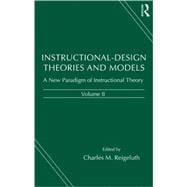
Note: Supplemental materials are not guaranteed with Rental or Used book purchases.
Purchase Benefits
What is included with this book?
| Preface | p. ix |
| About Instructional-Design Theory | p. 1 |
| What is Instructional-Design Theory and How is It Changing? | p. 5 |
| References | p. 28 |
| Some Thoughts About Theories, Perfection, and Instruction | p. 31 |
| References | p. 46 |
| Unit 2: Fostering Cognitive Development | p. 49 |
| Cognitive Education and the Cognitive Domain | p. 51 |
| References | p. 67 |
| Multiple Approaches to Understanding © | p. 69 |
| Teaching and Learning for Understanding | p. 91 |
| References | p. 113 |
| Open Learning Environments: Foundations, Methods, and Models | p. 115 |
| References | p. 139 |
| Designing Instruction for Constructivist Learning | p. 141 |
| References | p. 157 |
| Learning by Doing | p. 161 |
| Toward the Development of Flexibly Adaptive Instructional Designs | p. 183 |
| References | p. 212 |
| Designing Constructivist Learning Environments 1 | p. 215 |
| References | p. 237 |
| Collaborative Problem Solving | p. 241 |
| References | p. 267 |
| Learning Communities in Classrooms: a Reconceptualization of Educational Practice | p. 269 |
| References | p. 291 |
| A Design Theory for Classroom Instruction in Self-Regulated Learning? | p. 293 |
| References | p. 316 |
| Systematically Using Powerful Learning Environments to Accelerate the Learning of Disadvantaged Students in Grades 4-8 | p. 319 |
| Landamatics Instructional Design Theory and Methodology for Teaching General Methods of Thinking | p. 341 |
| Integrated Thematic Instruction: from Brain Research to Application | p. 371 |
| Instructional Transaction Theory (Itt): Instructional Design Based on Knowledge Objects | p. 397 |
| The Elaboration Theory: Guidance for Scope and Sequence Decisions | p. 425 |
| Fostering Psychomotor Development | p. 455 |
| The Development of Physical Skills: Instruction in the Psychomotor Domain | p. 457 |
| Fostering Affective Development | p. 483 |
| Affective Education and the Affective Domain: Implications for Instructional-Design Theories and Models | p. 485 |
| Recapturing Education's Full Mission: Educating for Social, Ethical, and Intellectual Development | p. 511 |
| Self-Science: Emotional Intelligence for Children | p. 537 |
| Structured Design for Attitudinal Instruction | p. 563 |
| Character Education: the Cultivation of Virtue | p. 591 |
| Adolescent Spiritual Development: Stages and Strategies | p. 613 |
| Reflections and Future Research | p. 631 |
| Formative Research: a Methodology for Creating and Improving Design Theories | p. 633 |
| References | p. 650 |
| Current Progress, Historical Perspective, and Some Tasks for the Future of Instructional Theory | p. 653 |
| References | p. 673 |
| Postscript | p. 675 |
| Author Index | p. 677 |
| Subject Index | p. 687 |
| Table of Contents provided by Publisher. All Rights Reserved. |
The New copy of this book will include any supplemental materials advertised. Please check the title of the book to determine if it should include any access cards, study guides, lab manuals, CDs, etc.
The Used, Rental and eBook copies of this book are not guaranteed to include any supplemental materials. Typically, only the book itself is included. This is true even if the title states it includes any access cards, study guides, lab manuals, CDs, etc.